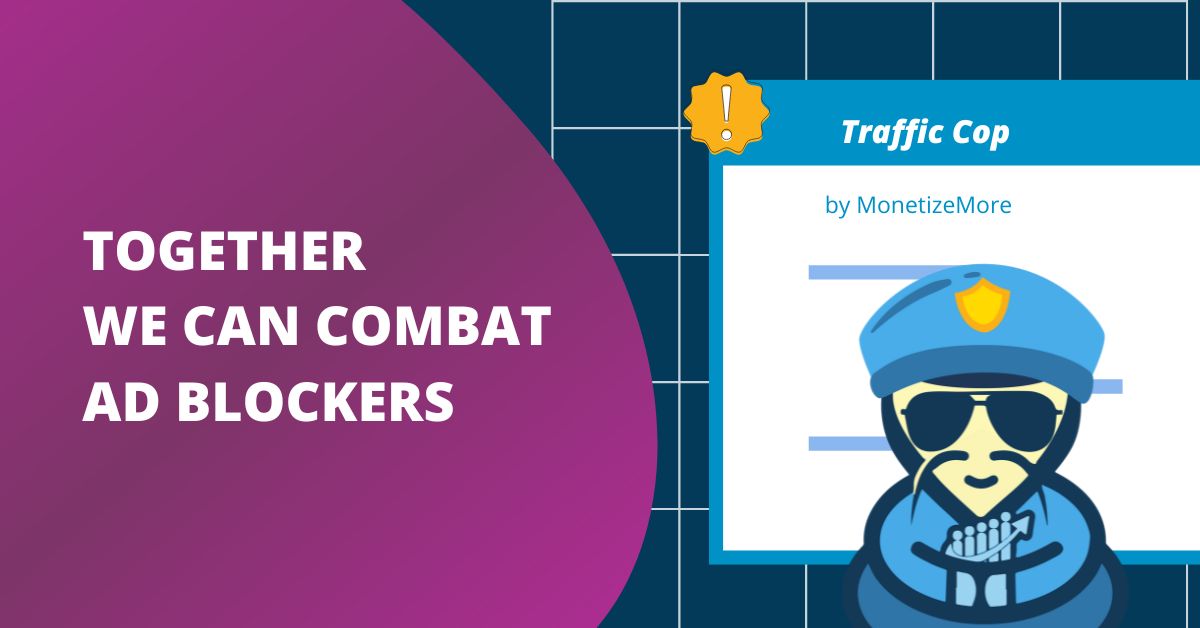
This post was most recently updated on January 18th, 2023
Ad blockers are on the rise, and they’re not going away. In fact, their growth is only likely to accelerate. Ad Blocking software is used by over 615 million people worldwide, with nearly 200 million users in the US alone. As a publisher of content online, it’s important to understand how ad blockers work and what you can do about them.
Ad blockers remain a problem for publishers monetizing content with ads. However, there are a few tactics publishers can use to combat the use thereof and regain lost revenue. This article breaks down how ad blockers work and few good alternatives that can help combat ad blockers.
Ad blockers work by blocking requests to ad servers. They’re installed as browser extensions, which means they can be installed on both desktop and mobile devices.
They block ads by referring to filter lists with addresses of all known ad servers and vast sequences. Anyone with an ad blocker installed will see blank space instead of ads when browsing a website or app with an active blocker installed in their web browser (for example, Chrome or Safari).
While the users navigate through the page for ad scripts, Ad blockers start scanning webpages instantly as soon as the site or page loads, then compares them with known ad scripts in the database so that any matching scripts are blocked from being displayed – essentially removing any advertising elements from your viewable area!
The most profitable publishers follow a user-first approach by displaying anti ad blocking messages which popup requesting permission to display ads.
Anti ad messages asking to display ads by agreeing to disable the ad blocker will popup in the viewer’s browser. So, its up to the user if they want to disable or enable their ad blocker to view your content.
Giving the users a choice to display or not display ads have shown that half of the audience are fine with disabling their ad blocker to view the ad. [Source: Forbes, Business Insider]
Ad Reinsertion is an alternative to ad blocking that allows advertisers to serve ‘acceptable ads’ to users who have their ad blockers turned ON. In this case, the ad network needs to whitelisted by ad block developers and approved constantly for ad reinsertion to do the magic.
However, don’t worry – MonetizeMore’s award winning tech & ad tags allow publishers to serve ‘acceptable ads’ to ad-block enabled users without any revenue clawbacks!
Publishers and bloggers with content-rich websites should consider offering ‘ad free’ subscriptions.
Find out more about best tactics to combat ad blockers in MonetizeMore social video.
Remember to subscribe to our YouTube channel for more insightful tips here.
Adblocking reduces publisher advertising revenue between 3-20% with almost 30 million US users running the software to date.
Big companies like Facebook find ways to beat ad blockers and still display their ads.
For small or even premium publishers, a lack of resources and access to 24/7 expert developers makes it hard to do the same.
Not all publishers are to blame for the ad blocker problem.
Due to some publishers utilizing annoying and often abusive techniques, users have become wary and increasingly prone to adblocker usage.
Besides complying with the Better Ad Standards, there are some strategies publishers can use to regain ad block user trust and with that their income.
It goes without saying that these strategies are not set in stone, and different approaches need testing before concluding which works best.
Inform your website visitors that you noticed they are using an ad blocker. Explain to them in a friendly and straightforward tone of voice that you utilize ads to support the website.
Ask them to disable the ad blocker or whitelist your website.
If they do not comply with your request, you still end up showing them your content.
Here, a similar approach is taken as mentioned above.
However, instead of allowing visitors to continue viewing content even if they do not disable or whitelist your site, you block them in return.
This option can be hard to implement unless you have high perceived content value.
Most often it can result in a negative effect on traffic, revenue or even your brand.
Whitelist rates tend to hover around 10-15%.
Many ad blocking firms allow publishers to pay a specific fee for them to show their ads.
Their ads still need to comply with the Better Ads Standards.
This strategy does feel like being blackmailed, and most publishers will refuse to pay the ransom.
Instead of trying to find ways around the ad blocking issue, publishers can take a different approach and adopt a quality driven ad experience for users.
Studies show that visitor user experience is not negatively affected by this approach.
Companies such as Admiral, Instart Logic, PageFair, and Uponit provide anti-ad blocking services to publishers to help recover lost revenue.
They achieve this by creating top advertising experiences that are non-intrusive and meet the Coalition For Better Ads standards.
Some publishers have seen an increase of 5-15% after partnering with these companies.
Beat the cost of ad-blocking tools with an award-winning ad-tech partner! Let’s talk!

With over ten years at the forefront of programmatic advertising, Aleesha Jacob is a renowned Ad-Tech expert, blending innovative strategies with cutting-edge technology. Her insights have reshaped programmatic advertising, leading to groundbreaking campaigns and 10X ROI increases for publishers and global brands. She believes in setting new standards in dynamic ad targeting and optimization.
10X your ad revenue with our award-winning solutions.